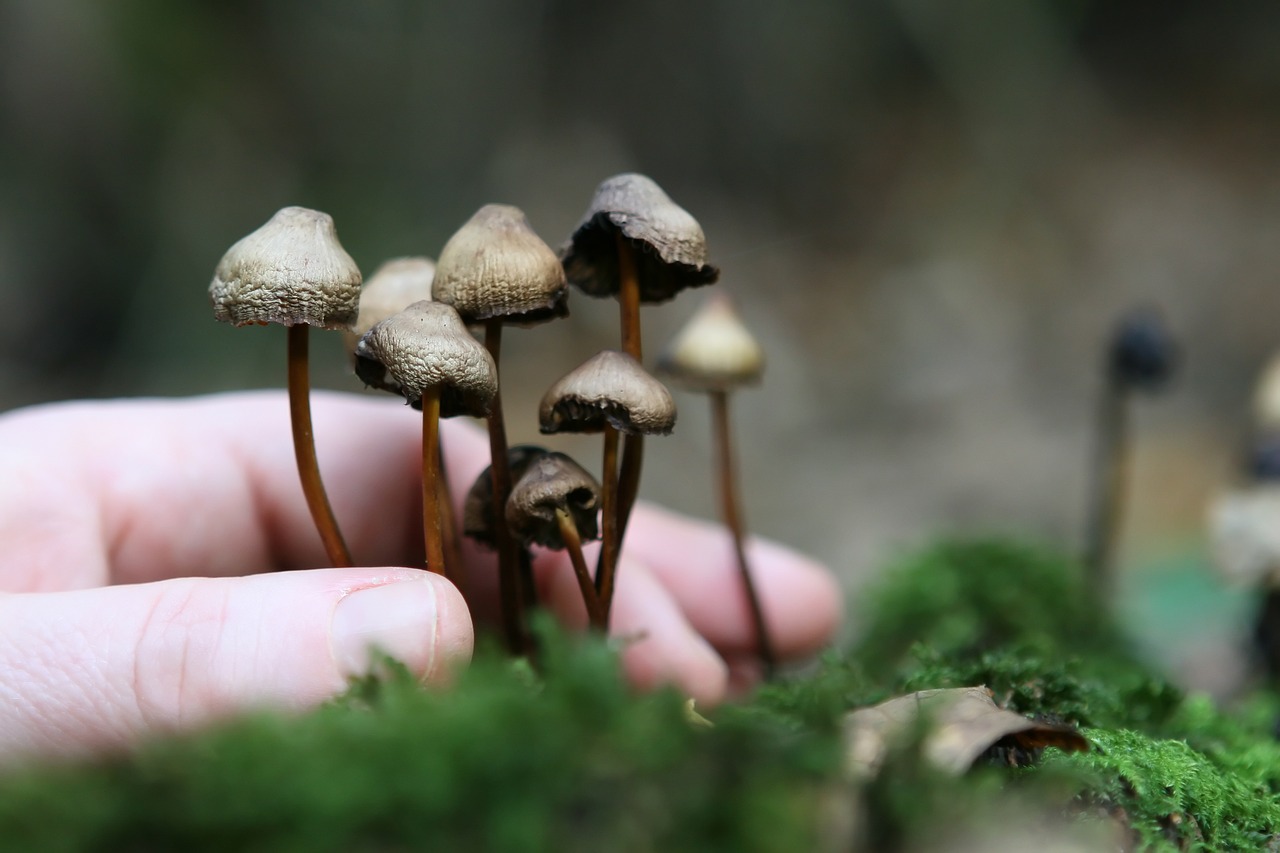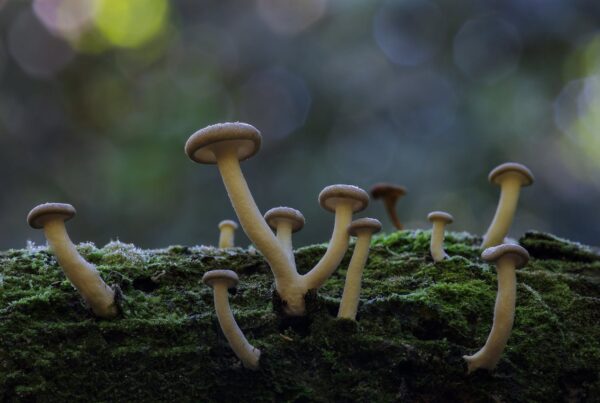Table of Contents
What is Mycelium?
Mycelia (plural) are the roots of the fungus. They could also be considered the digestive system of mushrooms. The function is to search for a food source. It finds this food source in the ground around it. The fungus secretes an enzyme into the soil, breaking it down to turn it into food for the fungus. This provides a key nutrient for the surrounding plants and creates “biomass” which is a great mulch for growing food.
Mycelium is useful in more ways than in the cultivation of magic mushrooms. They are essential to the root growth of many plants above ground, including trees. Tree roots, for instance, have a symbiotic relationship with fungi. The tree gives carbon to the fungi in the form of sugar and in return fungi give the trees essential minerals such as nitrogen and phosphorus.
Much like the human brain, mycelium makes connections among plants, only these connections are underground. Scientists are now discovering that plants and trees have nervous systems that fungus might control, and it may affect communication, memory, and learning. Mycelium feeds on the decaying matter, and also regenerates the soil, ridding it of any pollutants.
Mycelium development is an important part of cultivating magic mushrooms. For those just starting out growing their own, there is a bit of a learning curve. It can get pretty involved and complicated. You can always buy mushrooms from Zoomies Canada online, but if you decide that cultivation is for you, understanding mycelia are essential.
How Does Mycelium Grow?
When fungal spores find a suitable place to grow, they form the first of two mycelium types– the primary or monokaryotic mycelium. The name refers to the fact that it has one nucleus. These are the mycelium you don’t see. The mycelium you do see is the secondary or dikaryotic mycelium. The name refers to the fact that each cell contains two nuclei.
When the fungal spores germinate, they form primary or monokaryotic mycelium. When two compatible, primary mycelium come into contact, the secondary or dikaryotic mycelium is created. The dikaryotic mycelium then can produce a mushroom or sclerotia.
Types of Mycelia
There are three types of mycelia, two of them are indicators of healthy cultivation.
- Rhizomorphic mycelia are the outward reaching string-like mycelium. Rhizomorphic mycelia are very recognizable, and like all mycelia, are made up of the building blocks called hyphae. The network of bundled hyphae is the rhizomorphs. Rhizomorphic mycelia are sent out ahead, then they send chemical messages back to the colony indicating that the way ahead is right for providing nutrients. The rest of the mycelia then follow. The hyphae at the end of the rhizomorphic mycelia secrete peroxidase that breaks down decomposing material in front of it for food. The hyphae then grow over the material and send the nutrients around the colony. This form of mycelia is preferred by many growers, sighting the increased chance of mushrooms being produced as the Rhizomorphic mycelia escapes the substrate.
- Tomentose or “Fluffy” mycelia are more similar to Rhizomorphic mycelia than they are different. The way the fluffy mycelia strands are arranged is quite different. There are no noticeable strands, but they are there. The cotton-ball appearance simply means that the strands are bunched together. The growing environment has much to do with whether your mycelia will take on the tomentose characteristics or the rhizomorphic characteristics. There is an ongoing debate among growers as to whether the type of mycelia has any influence on the speed of the growing process or how bountiful the flushes are.
- Aerial mycelia are present when growing conditions are not optimal. In this situation, the mycelia shoot outward instead of stretching out across the medium or forming a ball. Often confused with bacterial infection, this type of mycelia can be a hindrance to your mushroom growing, producing weaker and smaller mushrooms. Typically, aerial mycelia are the result of a lack of fresh air exchange and excessive humidity.
Mould or Mycelium?
Being able to identify the difference between mould and mycelium is critical. Your culture is most likely contaminated if you spot green, blue, grey, or black patches on or in your fruiting box. The key is discolouration. You may see some blue spots but that can be just bruising.
Cobweb moulds are generally pretty easy to spot. Instead of the bright white of mycelium, it has more of a greyish colour and is stringy and puffy. Cobweb moulds and green moulds are not toxic to humans, but they aren’t so good for your mushrooms.
Zoomies Canada is Your Best Source for Shroom Information
When you think of psychedelic shrooms in Canada, think Zoomies Canada. We continue to provide information that we hope will guide you on a safe and enjoyable journey.





